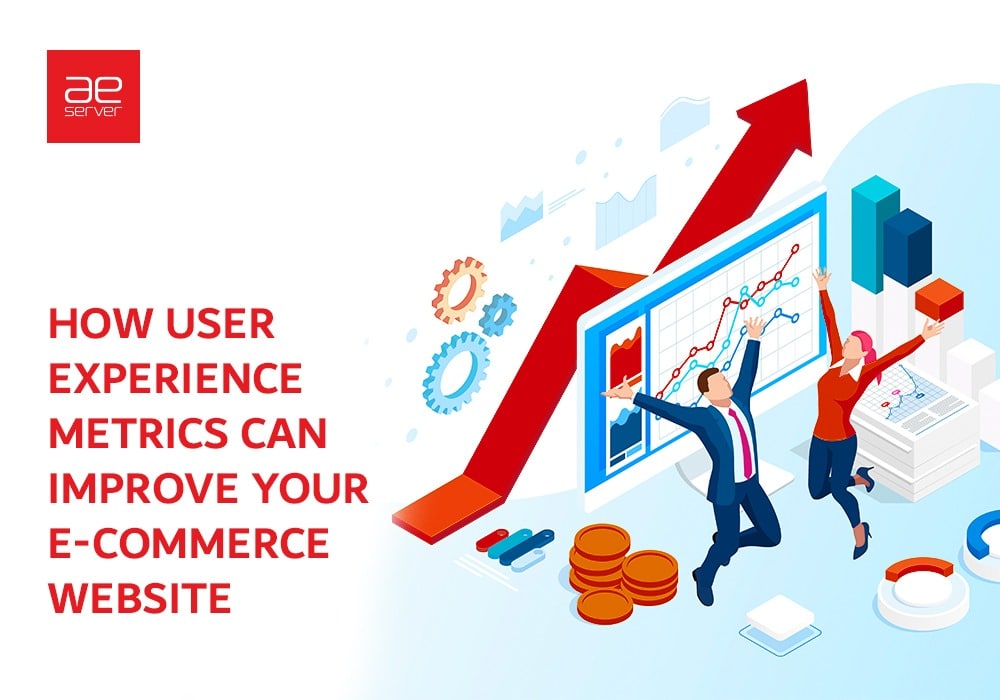
How User Experience Metrics Can Improve Your E-commerce Website
Over the past decade, eCommerce sales have been moving up. The level of competition is increasing as the number of retailers grows. Now it is more important than ever for individuals and companies to discover ways to set themselves apart.
So, how do you create an online store that works better and converts visitors into leads? It begins with tracking user experience metrics.
User experience comes from people’s actions and behaviours that show a deeper understanding of the experience they have on your website.
This post will guide you to understand how UX metrics can improve your eCommerce site by exploring why UX is important for eCommerce, the benefits of tracking UX metrics and why you should track eCommerce UX metrics.
Why Is Ecommerce UX Important?
In a nutshell, conversion rate, purchase frequency, average purchase value and retention period are the four extensive performance metrics directly impacted by eCommerce UX.
Satisfied customers are willing to recommend your store and are more likely to make purchases again. By enhancing the user experience, you will build more loyalty, receive positive feedback and extend the period when customers shop with you.
Related: Six Must-Have Features For Successful E-Commerce Websites
Benefits of Tracking UX Metrics
Knowing the specifics of monitoring UX metrics has several benefits:
- It offers relevant information on enhancing your eCommerce platform rather than just testing your options.
- It pinpoints the area to help you determine where your site is lacking and where you can make changes for the better.
- Gaining insight into your customer’s behaviour paves the way for new opportunities to wow them and satisfy their needs.
Key Ecommerce UX Metrics
Tracking UX metrics constantly helps you measure and analyze the quality of your website user experience. Because every interaction of customers with your website can impact their perception, here are the key eCommerce UX metrics we advise you to track.
Load Time
Your visitors are busy and have shorter attention spans. If your page load time is more than 3 seconds, they will abandon your site; as page load time goes from 1s to 3s, the probability of bounce rate increases by 32%.
The worst part of a slow-loading site is your visitors will immediately move on to your competitor’s site. That ruins all the efforts to increase traffic and conversions.
Even somehow, if your visitors stay, they will have a poor impression of your site, making them less likely to make a purchase.
You can improve your slow load times through simple tweaks like optimizing images, using CDN and frequently checking insights tools.
Related: Ten Free & Paid Ways to Drive More Traffic to Your Website
Pageviews
Pageviews help you to measure the number of times a page has been accessed within a specific time frame. If the pageviews are higher than the conversion, it means the customers are not finding what they are looking for on your website. Therefore they are essential to check your conversion goals and align the pageviews to determine whether you are achieving your goals.
Bounce Rate
A bounce rate happens when a visitor leaves your site after viewing only one page. Bouncing visitors can be a lost opportunity, but in the end, it’s all about conversion.
A bounce rate measures the percentage of visitors who come to your site and leave without performing any action, regardless of the time they spent on the initial page.
The bounce rate of every page can be different. For instance, you may get a higher bounce rate on an article page compared to a landing page.
If you want to reduce your website’s bounce rate, analyze what drives users to leave your site so early. Moreover, ensure your site is easy to navigate, responsive and has good text readability. Build some landing pages, include clear calls-to-action (CTAs), use compelling visuals, and do some A/B testing to check what works best.
Related: E-Commerce and E-Business – Another Layer of Hosting
Session Length
Session length measures a visitor’s time on your website during a single session. Finding the number of pages users visit per session is also important because it specifies how engaged they are.
To find out what visitors are doing during these sessions, you can implement session recordings, on-site surveys and feedback. These features provide more detail on your customer’s journey and also reveal UX issues if any.
Visitor Navigation Path
UX contains many moving parts, including site navigation. Navigation is about designing a web layout in a way to reduce the number of clicks users take to find what they are looking for.
Your website design should provide visitors with quick browsing without having to click more than two places to find what they seek.
Here are a few tips to keep in mind:
- Create a compelling and aesthetic design that catches your visitors’ attention without confusing or making them forget why they came to your site.
- Make your site intuitive and functional for visitors using specific labels.
- Group products and add subcategories to be structured. Make your site clean and clear and avoid over-complication.
Conversion Rate
A conversion rate measures the percentage of visitors who perform desired actions on your website. These actions include creating an account, making a transaction or signing up for a newsletter. The conversion rate provides insights depending on your goal, whether they are being achieved or not. That means monitoring conversions will help you determine your site’s performance.
Device Type
Your visitors can access your website through smartphones, PCs, laptops or tablets.
Please find the devices from your site and break them down by type. This way, you can see how often each device is used so you can optimize the experience.
Related: How to Secure Your E-Commerce Website (GUIDE)
Why Should You Track Ecommerce UX Metrics?
User experience is critical to eCommerce because it directly ensures conversion. It is said that you can’t manage what you can’t measure. So tracking your eCommerce metrics regularly gives you insights so you can make better-informed decisions about running your online store.
When you make it easy for users to buy from you, they will recommend others and buy more frequently; that’s why you have to ensure you offer the best UX possible.
Stay Ahead of the Competition With UX Optimization
No standard checklist guarantees a good user experience for your site’s visitors. However, you can track the above metrics to achieve it.
E-commerce sites rely heavily on user experience design to guarantee that visitors can quickly locate what they’re looking for, buy something, and leave the site. Customers will buy more frequently if they find it easy to do business with you. Because of this, your business must provide an excellent user experience.
Tracking the metrics discussed above to measure your UX performance and up your game will help drive sales and retain loyal customers.
If you are ready to get started with your online store, don’t forget to check AEserver’s Managed WordPress Hosting Dubai plans. Pick the one that fits your requirements and present your online store today.



